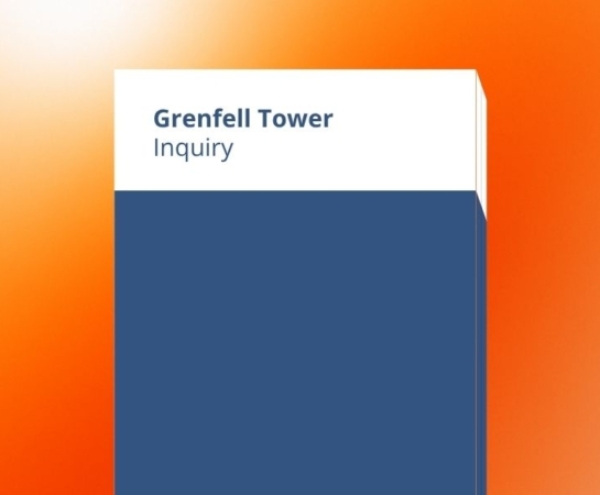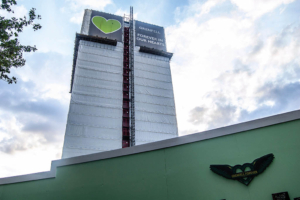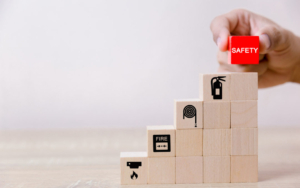
The Grenfell Tower Public Inquiry: Phase Two
The road to justice has not been an easy one. And for the Grenfell Tower community, the path is still long and uncertain.
It has been over seven years since the Grenfell Tower’s fatal fire. The 14th of June 2017.
Since then, the government and industry bodies have found themselves up against intense scrutiny. Because, ultimately, how can a fire on this scale happen if people follow regulations and prioritise safety?
A timeline since the Grenfell Tower fire
On the 15th of June 2017, Theresa May, Prime Minister at the time, announced a public inquiry into the cause of the Grenfell Tower fire.
The government decided to hold an independent review of fire safety in high-rise buildings, chaired by Dame Judith Hackitt. This independent review later led to the Building Safety Act 2022.
Soon after this announcement, on the 15th of August 2017, Sir Martin Moore-Bick was named chair of the public inquiry. The Grenfell Tower’s public inquiry was split into two Phases:
- Phase One heavily focussed on the cause of the Grenfell Tower fire. It also covered its development and how the London Fire Brigade and other services responded.
- Phase Two examined the wider context of the fire: building regulations, the refurbishment, the companies involved, and more.
Phase One of the Grenfell Tower public inquiry was published on the 30th of October 2019. From that point onward, it felt as though the entire world had been waiting for Phase Two – the final report – to be released. That day finally arrived on the 4th of September 2024.
What were the final findings of the Grenfell Tower report?
While it is not possible to summarise the report’s entire 1,700 pages in this article, we include some of the key findings in this section.
Missed opportunities by the government
From 1991 to 2017, the government had many chances to address the risks of combustible cladding and insulation. This was especially important for high-rise buildings, but they did not take action.
Even after knowing the results of a 2001 fire test that presented the danger of these materials, the department failed to make this public knowledge.
Between 2012 and 2017, the government got many warnings. They still did not change or clarify the guidance in Approved Document B.
Dangerous testing and marketing of products
One critical reason the Grenfell Tower had combustible cladding and insulation installed was due to the companies who manipulated fire tests, misrepresented the data, and proceeded to mislead the industry.
Sadly, it was a game of cost-cutting, greed, and corruption. Life safety was an afterthought.
Examples of how the manufacturers of these products conducted their business:
- The cladding manufacturer knew the use of its Reynobond 55 PE in cassette form was dangerous, yet deliberately concealed this information from the market.
- Manufacturer of the foam insulation marketed its product as ‘acceptable for use in buildings above 18 metres in height’. However, we know the test supporting that claim had been manipulated to achieve the result. This was not mentioned in marketing literature.
- Manufacturer of the insulation panels knew its K15 product could not be sold for use in the external walls of buildings over 18 metres. However, continued to sell it anyway with misleading certification.
Lack of fire safety management
Another finding from the Grenfell Tower fire inquiry was the ongoing fire safety management failures. These failures were linked to the Tenant Management Organisation (TMO) and the Royal Borough of Kensington and Chelsea.
They included a fire strategy that was not approved. There was also a significant backlog of fire safety issues that were ignored. The emergency plan was outdated and incomplete in some areas, especially for vulnerable residents.
Cost-cutting and incompetence during the refurbishment
To avoid public tender, the TMO manipulated the procurement process and chose to cost-cut. This led to cheaper, combustible panels used on the Grenfell Tower.
The architect, principal contractor, and cladding subcontractor assumed others were responsible for the fire safety of the building; therefore, fire safety was not taken seriously.
There was also an incomplete fire safety strategy, and potential consequences were not raised.
Training failures of the London Fire Brigade
The Grenfell Tower fire shows that lessons were not learned from the Lakanal House fire in 2009. Back then, problems with the LFB were noted in fighting high-rise fires.
It was found that the LFB’s training system was slow. And knowledge of the dangers around combustible materials and external fire spread was not communicated or reflected in training. Information that could have aided in getting the fire under control a lot sooner.
What were the recommendations of the Grenfell Tower inquiry?
To combat the findings of the public inquiry, recommendations were put forward to ensure building safety becomes a priority:
- A single regulator for all functions of the construction industry
- Redefining what a high-risk building is, not just basing it on height
- Updating Approved Document B to meet building regulations
- All high-risk buildings must have a fire safety strategy
- Better fire testing methods
- An independent college of fire and rescue
After years of waiting for answers and watching a “merry-go-round of buck-passing” play out, the inquiry concluded that the fire was caused by a systemic failure involving multiple organisations and individuals across the construction industry.
All the deaths were entirely avoidable.
It has truly highlighted the need for change to ensure a disaster of this consequence never happens again.
While the final report has provided some closure, the fight for justice continues for the Grenfell Tower community – criminal proceedings are not expected to begin until late 2026.
Other sources:
Grenfell Tower Inquiry. (2024). Phase 2 overview: Large document. Retrieved from https://www.grenfelltowerinquiry.org.uk/sites/default/files/CCS0923434692-004_GTI%20Phase%202%20OVERVIEW_LARGE_3%20SEPT_3.pdf
Inside Housing. (2024). Seven years since Grenfell: A timeline. Retrieved from https://www.insidehousing.co.uk/insight/seven-years-since-grenfell–a-timeline-86562

This article was written by Rebecca Croton
Content Marketing Executive
Learn More About Rebecca Croton

